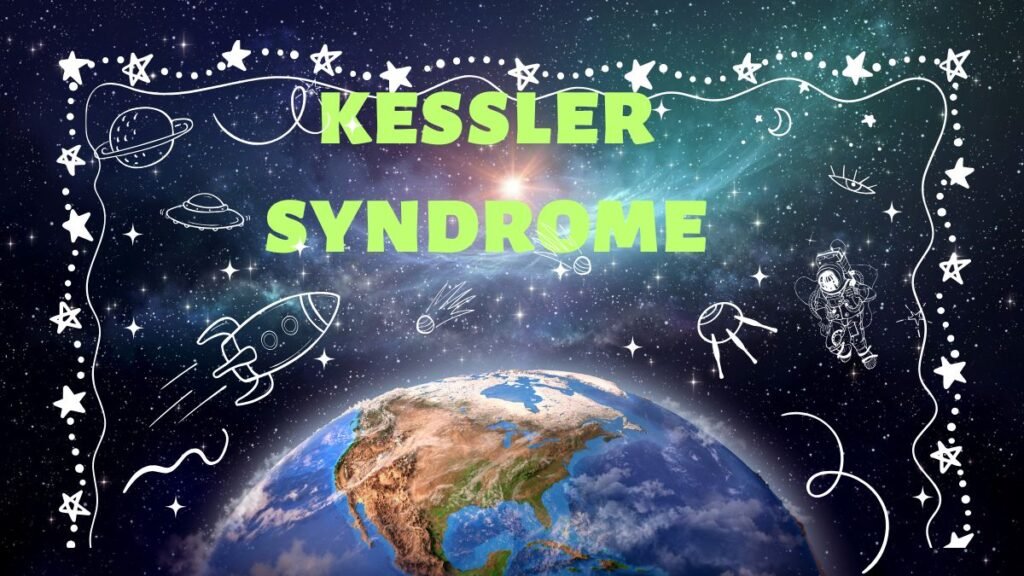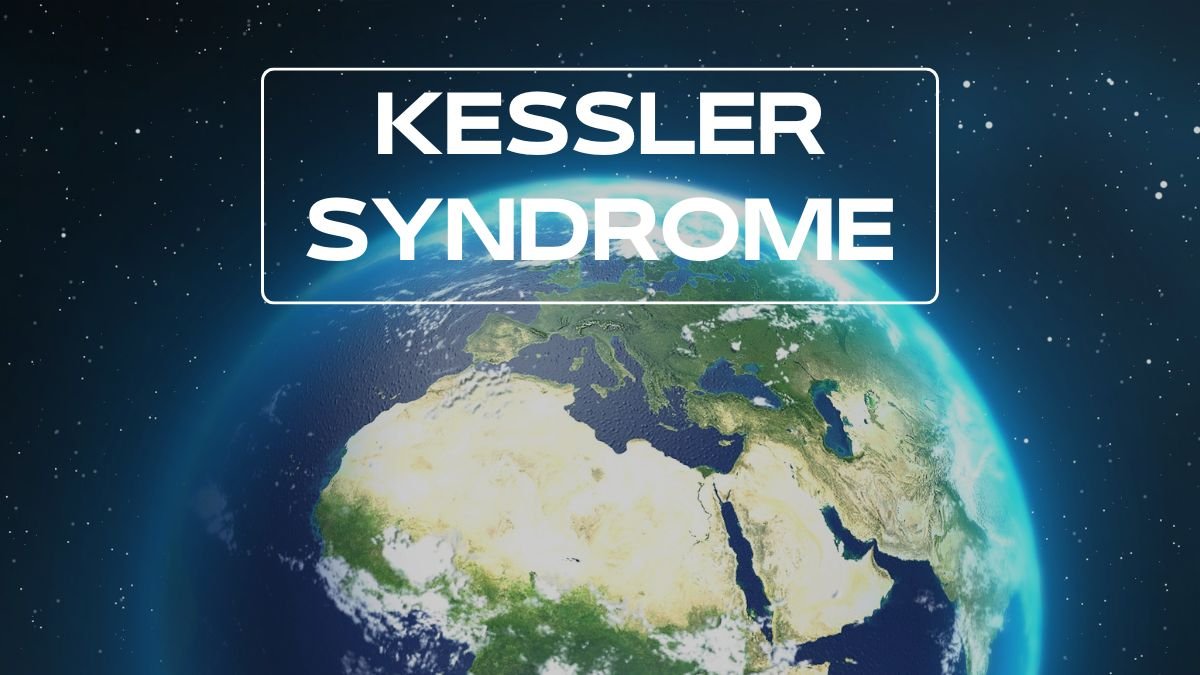
Rising Threats in Space: The Growing Risk of Orbital Debris
Kessler Syndrome: A piece of space debris swerved dangerously close to the International Space Station’s (ISS) route in November, posing an immediate danger to the seven astronauts on board. A spacecraft connected to the ISS ran its engines for five minutes to change the station’s course and guide the huge football-field-sized lab away from any potential collision. If the manoeuvre hadn’t been performed, the debris might have come within 2 ½ miles (4 km) of the ISS, which NASA considered to be a serious concern.
Satellite debris poses a threat on a regular basis. Since it started operating in 2000, the ISS has actually had to make many similar path corrections, and the amount of junk in orbit is increasing year, increasing the chance of a collision. These dangers not only endanger astronauts but also the satellites that run our everyday operations, such as those for television, broadband internet, and GPS.
The Growing Congestion in Space
Concern has long been raised about the growing amount of debris in space. Due to previous collisions, explosions, and weapons tests, there are tens of thousands of pieces of debris from this increasing space traffic. Some of these fragments can be tracked, but millions more are hidden by existing technical limits. According to Dr. Vishnu Reddy, a professor of planetary sciences at the University of Arizona, the exponential rise of items launched into space in recent years portends a crisis: “We are heading towards the situation that we are always dreading.”
Kessler Syndrome, a catastrophic occurrence, could result from this increasing crowding. According to this theory, which was first put forth by astrophysicist Donald Kessler in 1978, an object collision in space may set off a chain reaction in which one explosion creates more debris, which in turn leads to other collisions. The series of events might eventually result in so much debris in Earth’s orbit that space exploration and satellite activities would come to a complete stop.
Space Traffic and the Risk of Collisions
More than 650 events, including collisions and explosions, have produced space debris since space travel began in 1957. These incidents might be anything from satellites inadvertently colliding to weapon testing carried out by nations such as China, India, and the United States. For instance, produced more than 1,500 pieces of traceable debris in 2021 when it tested a missile on one of its own satellites. Similarly, in 2009, the commercial communications satellite Iridium 33 collided with the military satellite Kosmos 2251, producing around 2,000 pieces of debris.
Due to the tremendous speeds at which they move in orbit, even minute items, like a chip of paint, can result in severe damage, and space collisions have become more frequent. For instance, NASA has recorded cases in which orbital debris has affected spacecraft. In 1983, a paint chip destroyed a window on the Space Shuttle Challenger.
The Limits of Space Debris Detection
Controlling space debris is a difficult undertaking. In order to avoid collisions, space situational awareness entails monitoring the motion of objects in orbit. This can be difficult, though, because only things bigger than a tennis ball can be detected. Most sensors are unable to detect smaller items, many of which are dangerous, making it challenging to anticipate and prevent possible accidents.
A NASA satellite came within 65 feet (20 meters) of crashing with an eliminated rocket in 2023. Even little particles of space junk can have disastrous consequences when travelling at speeds of up to 17,500 miles per hour (28,000 km per hour), and the great bulk of space debris is still untrack able despite advancements in tracking technology.
The Danger of Higher Orbits
With thousands of satellites and space stations currently in low-Earth orbit (LEO), the risk of space debris is particularly high there. Reaching about 1,200 miles (2,000 km) above Earth, this area is becoming more and more populated with satellites for climate monitoring, internet services, and other purposes. A chain reaction of collisions in low Earth orbit could destroy critical satellites, stop rocket launches, and endanger the safety of astronauts.
The threat from debris in higher positions, including geosynchronous orbit (GEO), is considerably more urgent. Objects stay in orbit for much longer at elevations of about 22,236 miles (35,786 km), and removing this trash is a difficult undertaking. According to Dr. Reddy, “The most dangerous place where this (Kessler Syndrome-like event) could happen is in GEO, because we have no way of cleaning it up quickly.
For more updates on our Website.
Preventing Kessler Syndrome: Challenges and Solutions
Experts agree that a two-pronged strategy—clean up technologies and more strict regulation—is necessary to avoid a Kessler Syndrome situation.
- Space Debris Cleanup Technologies: The increasing volume of debris is being addressed by a number of programs. One example is the Drag Adjustment Deorbiting Systems (ADEO), which was created by High Performance Space Structure Systems (HPS GmbH) and the European Space Agency (ESA). With the help of a drag travel, this creative system returns lost satellites to Earth’s atmosphere, where they casually decay. These technologies are costly and experimental, though, and it’s unclear who would pay for their rollout.
Regulation and Guidelines: Experts in space policy have long argued for stronger international laws to stop careless behaviour that adds to space debris. The Pact for the Future, which was signed by the UN in September 2024, intends to create rules for managing debris and space transportation. Experts warn that these efforts might not be successful in the absence of legal tools.
Conclusion: A Delicate Balance
Every year that goes by makes the situation in Earth’s orbit more dangerous. Some experts, like Dr. Frueh, are more gloomy, thinking that if prompt action is not done, the damage could be permanent, while others are still hopeful that effective laws and cleanup technologies will avert a disaster.
The problem of space debris is similar to the growing environmental disaster on Earth, as noted by Dr. Nilton Renno of the University of Michigan. We now understand that space has a limited capacity, just as we formerly believed that the oceans could take in an endless amount of plastic waste. The trash in Earth’s orbit has the potential to permanently harm our technological infrastructure and future space exploration capabilities if it is not managed carefully.
The increasing danger of Kessler Syndrome should serve as a reminder to take immediate action before it’s too late, since time is of the crucial.
What is Kessler Syndrome?
According to a theory known as Kessler Syndrome, a space accident can produce a series of debris that leads to other crashes, possibly clogging Earth’s orbit too much for satellites to function or for space research to proceed.
How often do collisions occur in space?
More than 650 events, including crashes and explosions, have produced space debris since 1957. These include intentional occurrences like weapons tests as well as unexpected accidents.
Can space debris be tracked?
Generally, space debris bigger than a tennis ball may be tracked. Smaller, more dangerous items, however, are frequently undetected and have the potential to seriously harm spacecraft.
Could Kessler Syndrome already be happening?
Although scientists disagree as to whether Kessler Syndrome started, the increasing amount of space debris is generally seen as a severe and developing issue.
